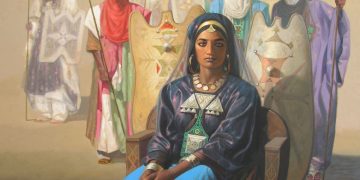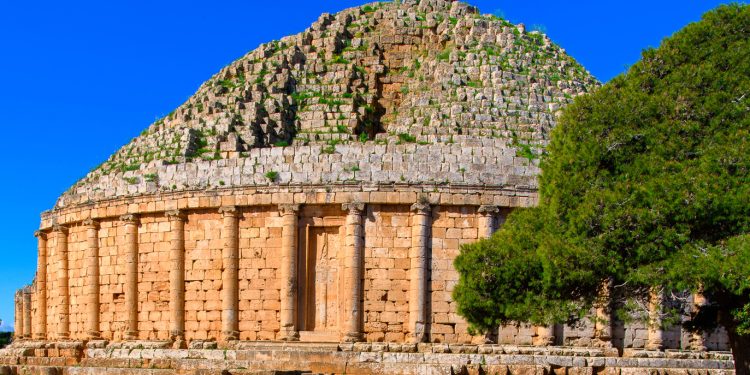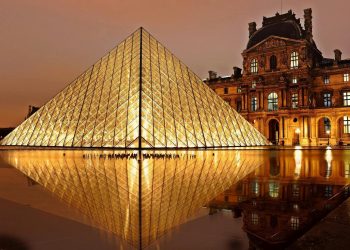The «Royal Numidian Mausoleum», located 70 km west of Algiers in an archaeological area under the commune of Sidi Rached in the wilaya of Tipaza, has been classified since 2002 as a National Monument and World Heritage by UNESCO.
This tomb also known under the Arabic name «Qabr al-Rûmiyya» (tomb of the Roman woman) or by the «Royal mausoleum of Mauritania», was built in circular shape at the top of a hill, at 261 m above the level of the sea.
According to historians, it was Juba II (52 BC, 23 AD) the Numidian king who had the idea of erecting this funerary monument in this area formerly called «Caesarean Mauritania». But behind his idea hides, in fact, a whole fascinating and incredible story of a man who wanted, by the construction of this tomb, to immortalize the woman whom he loved so much and whose separation he visibly could not bear.
The story goes back to the time of his descendant Juba I. The latter, presumably wanting to fulfill his grandfather’s dream Jugurtha, attempted, by military action, to unify all the Numidian dynasties under one banner. But its ambitious work unfortunately came up against the dictate of the powerful and hegemonic Rome, which above all did not want this unification, for fear that its supremacy in the region would be called into question.
The motto of the Romans was known at the time: «Divide and rule» and they applied it to all their colonies, especially in North Africa to keep the formidable Numidians under their domination.
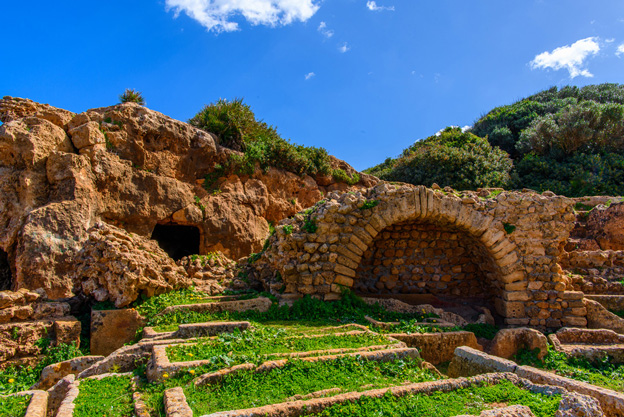
Juba I therefore failed in unifying since he was defeated and killed by the Roman troops led by Julius Caesar around Hippo (Annaba today).
His son and successor Juba II, who was no more than five years old at the time, was taken by the Roman general to be brought up into golden captivity in Rome.
The Numidian child grew in the palace of Julius Caesar according to the precepts and a purely Roman education. After his death, he was taken in charge by the successor to the throne, Augustus in this case, who taught him the arts, sciences and city affairs in schools and institutes in Rome and Athens.
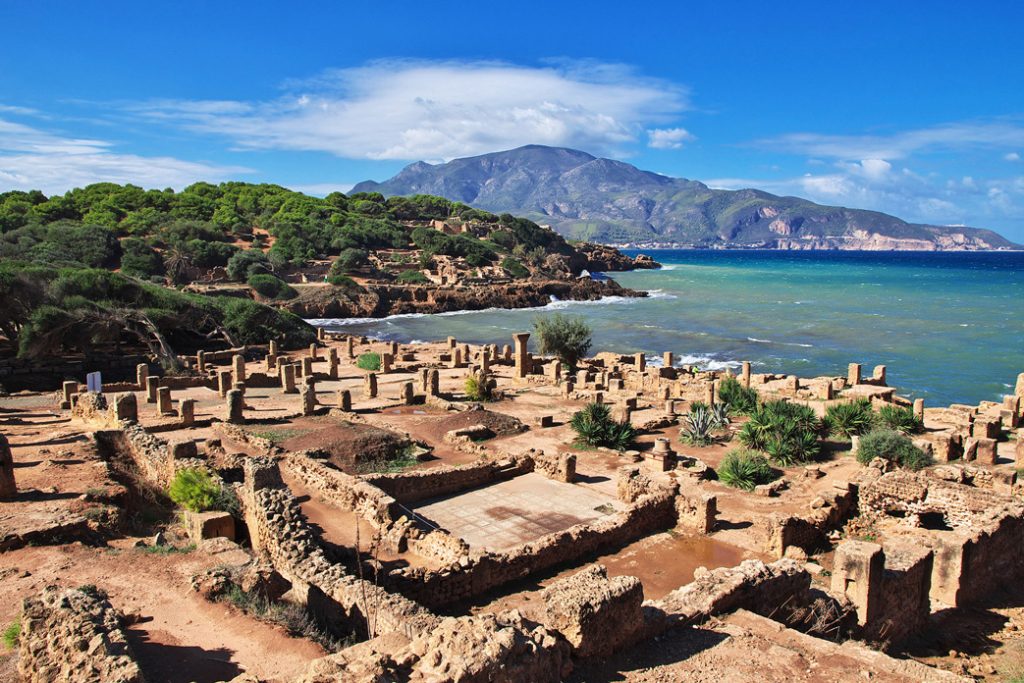
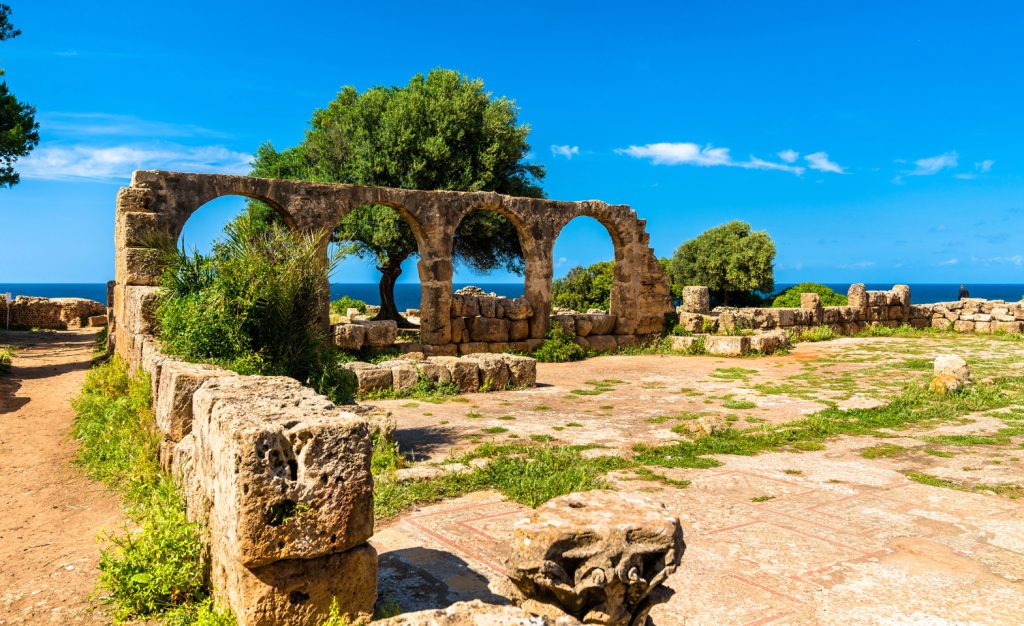
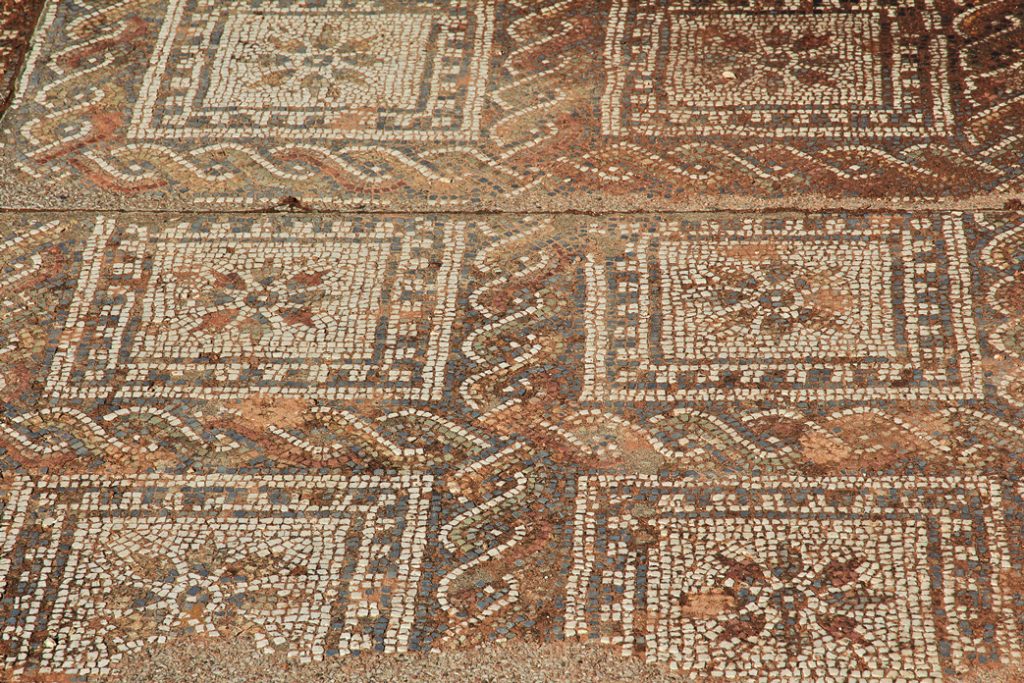
But before Julius Caesar death, he was dethroned and eliminated before Cleopatra, the famous queen of Egypt. He also gave him his daughter Selene whom he gave to his sister Octavia to adopt as well. The Egyptian princess was brought up in the same imperial palace in Rome.
Her closeness to Juba II has transformed over time into a beautiful love story which was crowned by her marriage to the exiled Numidian king.
Over the years, Juba II grew into a strong and insightful man thanks to the knowledge he acquired. The Roman education he received and his loyalty to Rome encouraged Caesar Octavius to appoint him governor of Mauritania Caesarean of which Caesarea (present-day Cherchell) was the capital. He reigned for fifty years.
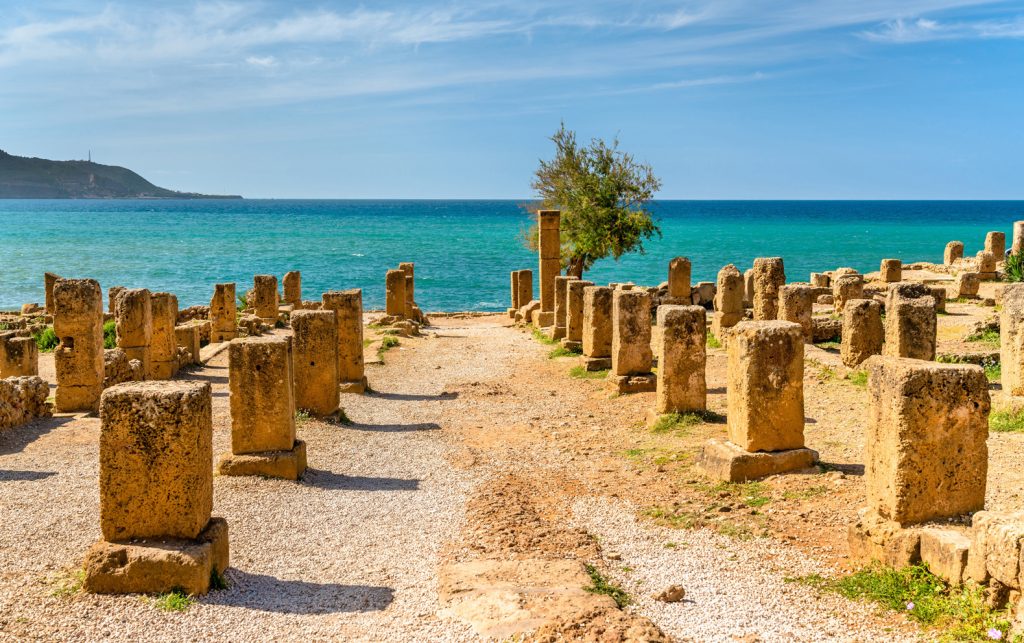
But Selene, his beloved wife, did not live long enough to see this promotion and her husband’s royal triumph. She died very young, which plunged Juba II into a long and deep sadness.
As not to forget his beloved wife, the inconsolable Numidian king then decided to build an edifice in her memory in the region of Tipaza.
«Qabr al-Rûmiyya» would therefore be the tomb of this princess of Egyptian origins. It was built by Juba II with great skill and in such a way that it could survive the vicissitudes of time. This is how much this Numidian king was affected by the loss of his partner Selene, in the prime of her life.
The Mausoleum is therefore dedicated to the young missing princess. It was erected in the form of a stone about 60.9 meters in diameter and 32.4 m in height. It has a cylindrical part decorated on its perimeter with 60 columns surmounted by Ionic capitals and supporting a cornice.
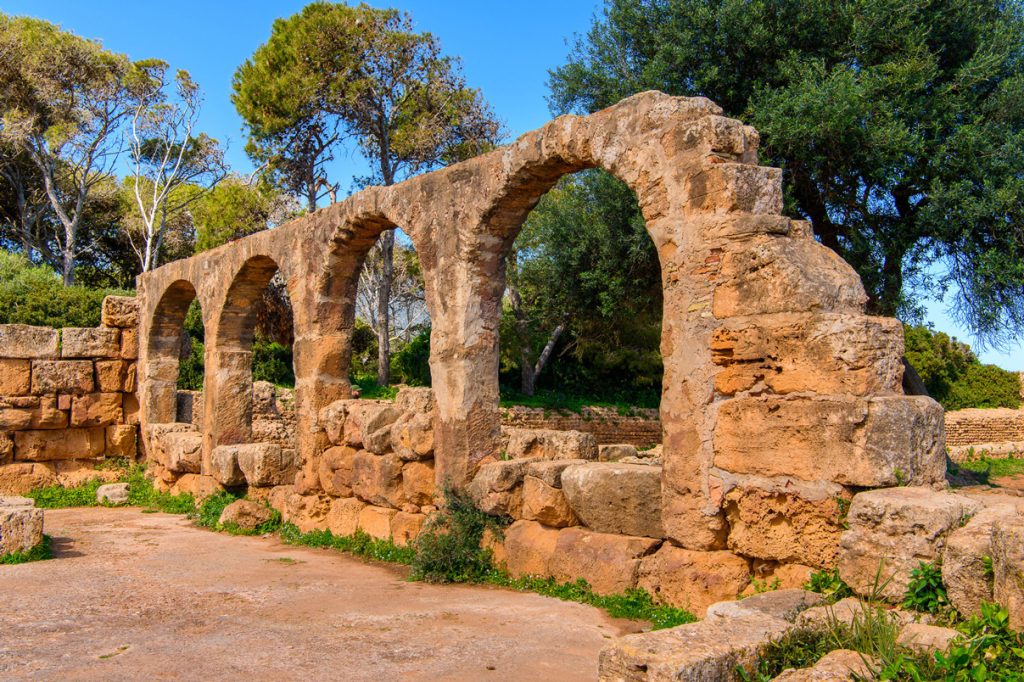
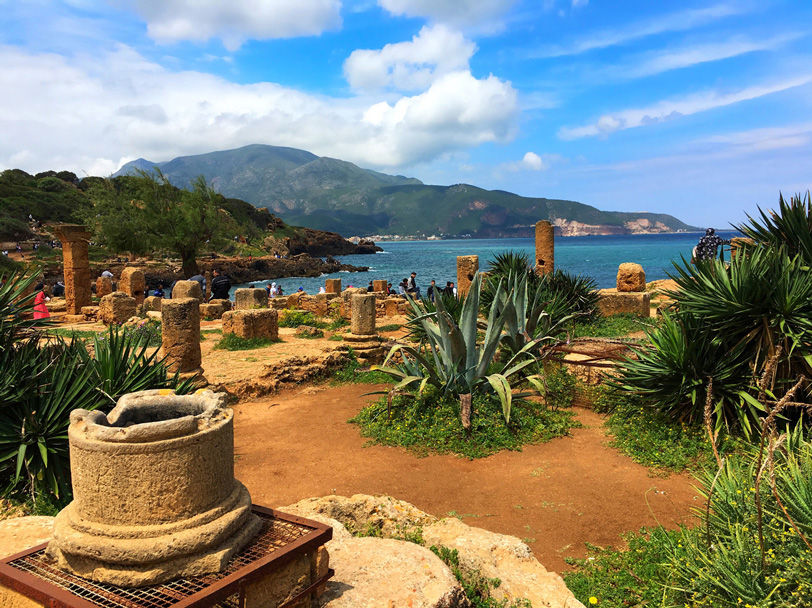
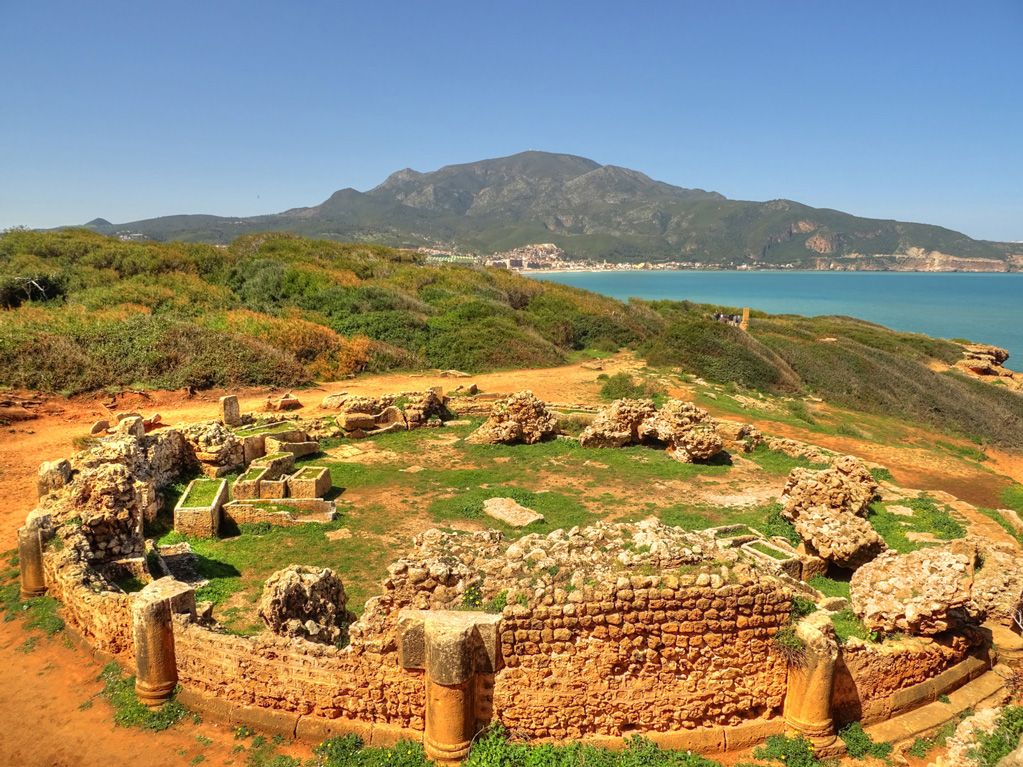
In front of the tomb, one can notice the remains of a construction 16 meters long and 6 meters wide. It is believed to be a temple adjoining the Egyptian princess building. The mausoleum also has four false doors located at cardinal points. These are 6.9 m high stone panels, framed on a jamb and shared in the center by moldings arranged in a cross. Perhaps this explains the other traditional name «Tomb of the Christian» that is often given to this building.
Some archaeologists also believe it to be a Christian building. Hence the Arabic name Qabr al-Rûmiyya which is taken from the Arabic word «Rumi» meaning certainly «Byzantine» or «Roman» but also being confused, in the Arab-Muslim tradition, with the word «Christian».
Still, the majority of archaeological researchers affirm that this Berber mausoleum has no connection with Christian civilization.
From the inside, when accessed through the main door, visitors find themselves in a very low access corridor that opens onto the Lions’ Vestibule. It is so called because we see a lion and a lioness sculpted in relief above the access to the interior corridor. From this vestibule, one reaches by climbing seven steps to a circular gallery of 80 m2 located in the heart of the monument.
In 1865, the French paleontologist and archaeologist Adrien Berbruggere carried out, at the request of Napoleon III, excavations at the end of which he discovered a narrow lower door located under the back door on the east side. This other exit could probably serve as a secret passage leading to the sanctuary.





















